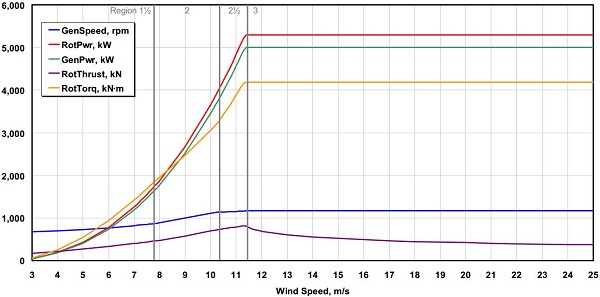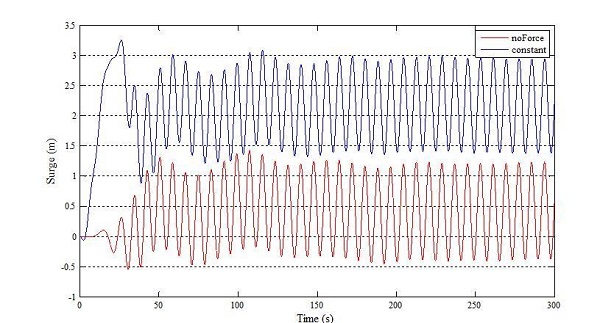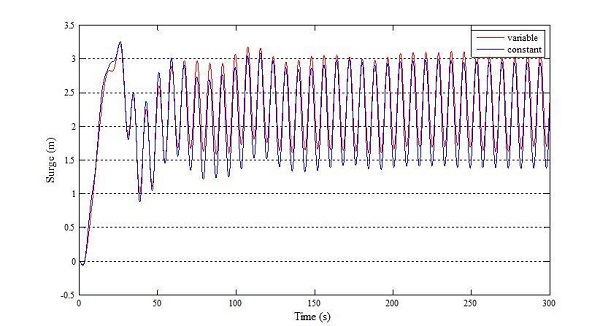University of Strathclyde
CFD & FSI-RG
Computational Fluid Dynamics &
Fluid Structure Interaction
Research Group
qing.xiao@strath.ac.uk +44 (0)141 548 4779
University of Strathclyde
Computational Fluid Dynamics &
Fluid Structure Interaction
Research Group
qing.xiao@strath.ac.uk +44 (0)141 548 4779
A Study of Fluid-Structure Interaction Problems for Floating Offshore Wind Turbines
By Yuanchuan Liu, Dr Qing Xiao
As one of the most abundant renewable energy sources in the world, wind energy has long aroused our interest. Along with the development of technology, wind turbines have been widely used all over the world to help extract energy from the restless wind. All of the wind turbines which have been deployed commercially are fixed and installed either on land or in shallow water near the coast. However, there are always objections about the visual impacts brought about by the installation. As a result, in recent years, people are assessing the feasibility of installing wind turbines far offshore so as to avoid those concerns. Furthermore, wind is more enduring and has better quality in deep water areas. All of these lead to the increasing interest in floating offshore wind turbines.
This project aims at the development of a coupled model of hydrodynamics and aerodynamics in time domain for floating offshore wind turbines under the framework of the popular open source CFD toolbox OpenFOAM. Our work starts with an existing incompressible two-phase CFD solver which is developed on OpenFOAM. The solver is already able to deal with hydrodynamic problems for floating platforms with mooring system. So what we need to do is to develop new functionalities to combine the hydrodynamic module with and the aerodynamic analysis module in OpenFOAM.
As a first step, the effects of the upper turbine part are simplified as aerodynamic force and moment which may be either constant or time-dependent. In the constant aerodynamic force model, the force is assumed to be determined by the incoming wind speed. In other words, when the wind speed is specified, the aerodynamic force can be obtained beforehand using the Thrust-Wind Speed curve shown in Figure 1. In the time-dependent model, the motion response of the platform is taken into account. The aforementioned curve is still used but here the force is actually defined by the relative velocity between the incoming wind speed and the instantaneous velocity of the platform. To achieve it, a look-up table is read at the beginning from which the force is interpolated at every time step. By doing so, the force is no longer a constant value but varies with time.

Figure 2 and Figure 3 show the surge response using different aerodynamic force models. From these figures, the influence of the aerodynamic force can be easily identified and difference between the two models is also shown, which demonstrate the importance and necessity of considering the aerodynamics of the upper wind turbine part.


In our second step, the effects of the supporting platform motion on the aerodynamics of a floating wind turbine are studied. The platform motion responses, including surge, heave and pitch, are superimposed onto the rotation of the wind turbine. Thrust and torque on the wind turbine are compared and analysed for the cases of different platform motion patterns together with the flow field. It is shown that the movement of the supporting platform can have large influences on a floating offshore wind turbine and thus needs to be considered carefully during the design process. For detailed information about this part of the research, please refer to the reference paper listed below.
In our third step, a full hydro-aero-mooring analysis is made possible by employing the solidBodyMotionFunction library in OpenFOAM, where the whole computational domain is decomposed to three adjacent domains connected by AMI patches (the OpenFOAM equavilent of sliding mesh patches). In this way, mesh deformation is avoided, which also decreases the computational cost. The following video shows the the 3DoF responses (including surge, heave and pitch) of the OC4-DeepCWind Semi-submersible floating wind turbine subject to both wind and wave loadings. A mooring system consisting of three catenary mooring lines is also employed to maintain the position of the FOWT.
Next, we want to take into consideration the aeroelastic effects for large offshore wind turbines by means of Multi-body Dyanmics. An open source software package for multi-body dynamics problems will be coupled with OpenFOAM to achieve a fully coupled Fluid-Structure Interaction simulation.
Please refer to:
Yuanchuan Liu, Qing Xiao, Atilla Incecik, Christophe Peyrard and Decheng Wan. "Establishing a fully coupled CFD analysis tool for floating offshore wind turbines." Renewable Energy (2017): pp 280-301.
Yuanchuan Liu, Qing Xiao, Atilla Incecik and Decheng Wan. "Investigation of the effects of platform motion on the aerodynamics of a floating offshore wind turbine." Journal of Hydrodynamics, Ser. B 28.1 (2016): pp 95-101.
Copyright © 2014 - All Rights Reserved - University of Strathclyde CFD & FSI-RG